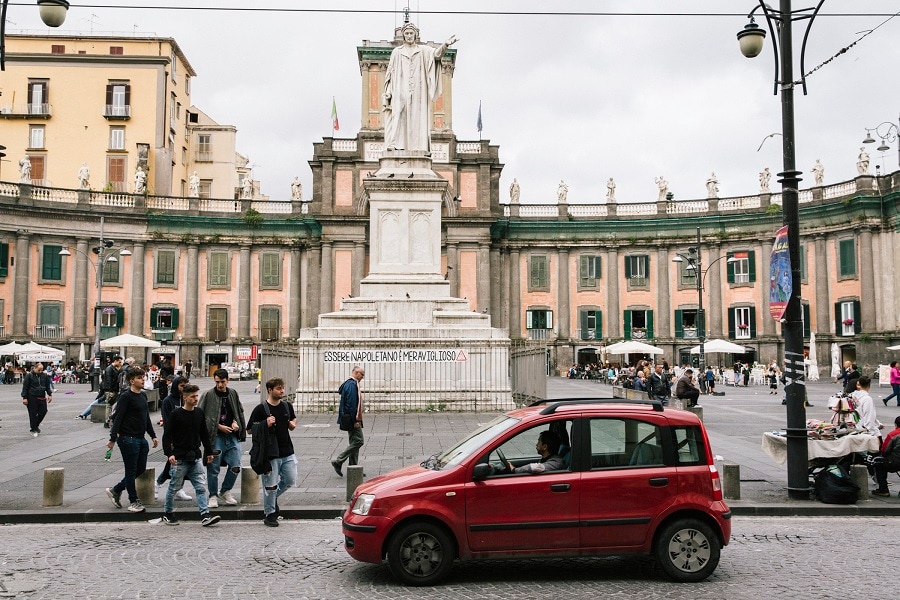When Japanese police surrounded Carlos Ghosn’s Gulfstream jet in November and packed him off to a Tokyo jail, they unwittingly provoked a seismic realignment of the global auto industry.
Ghosn’s sudden fall set off a chain of events that, this month, prompted Renault’s chairman, Jean-Dominique Senard, and John Elkann, the Fiat Chrysler chairman, to jump on their mobile phones and entertain a crazy idea: a deal to create the world’s third-largest automaker, according to two people with knowledge of the discussions. After a flurry of phone calls and meetings between the two men over several weeks, Fiat Chrysler formally asked Renault to merge on Monday.
If the deal goes forward, the combined Renault and Fiat Chrysler would elbow past General Motors in car sales and create a new challenger to Volkswagen and Toyota, the global leaders. And if Fiat Chrysler and Renault can patch up strained relations with Nissan, with which the French company has a formal alliance, the three would be de facto the biggest car manufacturer in the world by a wide margin and might force other large automakers to rethink their strategies.
Whether this industry-changing behemoth ever takes shape, though, may depend on what was likely to be a tense meeting Tuesday, which will continue Wednesday, in Tokyo between Senard and Hiroto Saikawa, the Nissan chief executive.
Without Nissan, Fiat Chrysler and Renault would be a big but far less formidable competitor, heavily exposed to the lackluster European economy and lacking any significant presence in China, which has become the world’s biggest car market.
But Nissan’s management has previously rejected Renault’s appeals for a closer partnership, and even a merger.
Renault executives kept Saikawa in the dark about their talks with Fiat Chrysler until days before the deal was announced, according to multiple people with knowledge of the talks. The slight could only have aggravated relations already strained after Ghosn’s arrest revealed deep differences about the future course of the Renault Nissan Alliance, which also includes Mitsubishi.![g_116695_fiatchryslerrenault1_bg_280x210.jpg g_116695_fiatchryslerrenault1_bg_280x210.jpg]() A Renault on the streets of Naples, Italy, on May 28th 2019 Image: Gianni Cipriano/The New York Times[br]The Europeans were secretive because they worried that the Japanese might feel threatened and try to interfere by leaking the details to government officials or the press, according to a person with knowledge of their thinking.
A Renault on the streets of Naples, Italy, on May 28th 2019 Image: Gianni Cipriano/The New York Times[br]The Europeans were secretive because they worried that the Japanese might feel threatened and try to interfere by leaking the details to government officials or the press, according to a person with knowledge of their thinking.
That was hardly a show of trust between companies that until recently were held up as a model of cross-cultural cooperation, an example of how carmakers can acquire the size and geographical breadth they need to survive while retaining their own identities.
“It speaks volumes about the relationship,” said Michelle Krebs, a senior analyst at AutoTrader. “How are you going to make all this work when there are such bad feelings?”
The companies say they want to continue to work together. But the lack of communication is inauspicious for an undertaking that, with Fiat Chrysler Automobiles in the mix, would be a hybrid of Japanese, American, French and Italian corporate cultures. Any two of those would be tough enough.
“If you add FCA, there will be a power struggle,” said Yoshio Tsukuda, an auto industry analyst at the Tsukuda Mobility Research Institute.
With the proposed Fiat-Renault deal in hand, Senard arrived in Tokyo this week with a lot more clout than the last time the partners met, in April. Nissan, on the other hand, is weakened after it reported less profit than Renault for the first time in a decade.
After Ghosn’s ouster on charges of financial misconduct, which he denies, Saikawa complained about what he saw as Renault’s unfair dominance of the alliance. Renault owns 43% of Nissan. But Saikawa argued that the Japanese company sells far more cars: 5.5 million in its last fiscal year compared with fewer than 4 million for Renault.
With Fiat Chrysler on its side, Renault would become an even more overbearing partner. Fiat and Renault had combined sales last year of 8.7 million vehicles. And Senard and Elkann, a scion of the Agnelli family, which has controlled Fiat for more than a century, have much in common.
Though Senard, 66, formerly the head of the tire maker Michelin, is Elkann’s elder by over two decades, both are products of elite European universities and speak French with each other. They have known each other for many years. There is no such bonhomie with Saikawa.
The deal with Fiat Chrysler also sets up a turf battle in the United States that will be difficult for Nissan to win. Renault and Nissan largely stayed out of each other’s way in the two decades since they formed an alliance. Renault concentrated on Europe, Russia, the Middle East and Africa Nissan focused on Asia and the United States. They bought parts together and shared the cost of developing new models, with their savings topping billions of dollars.
But Fiat Chrysler and Nissan are in a war of attrition in the sagging American market, where both are heavily discounting their vehicles to get them off the lots and selling to rental fleets, which is less profitable than selling to consumers.
“Previously Renault and Nissan were kind of complementary in their geographic coverage,” said Christopher Richter, an auto industry analyst at CLSA, a research firm. “Now you’ve introduced a new maker who is very big in the U.S., which is one of Nissan’s core markets, and Nissan is competitive with Chrysler in the U.S., so that’s another problem to solve.”
After the arrest and ouster of Ghosn it became obvious how much the alliance depended on his personality and limitless self-confidence.
By the time Senard took over in January, relations had seriously deteriorated. He tried to smooth things over, still hoping — like Ghosn — to eventually create a closer alliance, maybe even a single company.
Senard spoke with Saikawa regularly, according to a person familiar with their interactions. They created a new leadership board for the Renault Nissan Alliance in March that gives equal weight to the Japanese side of the partnership.
To soothe Japanese sensibilities, Senard insisted that there was no rush to revive talks about strengthening the alliance, at least until the leadership vacuum left by Ghosn was filled.
Privately, Renault executives were increasingly concerned about Nissan’s flagging financial performance. Nissan had regularly contributed about 2 billion euros ($2.2 billion) annually to the alliance. But Nissan cut its profit forecast in February, citing difficulties in the United States and Europe.
Soon after the new leadership board’s first meeting in Paris in April, in which Saikawa and executives of Nissan and Mitsubishi were wined and dined at a dinner atop Renault’s flagship showroom on the Champs-Élysées, tensions flared.
Senard had put together what advisers said was an informal proposal to merge with Nissan under a holding company. The plan was drafted in secret, but almost immediately leaked to the Japanese news media. Nissan angrily rebuffed the idea.
Senard was taken off-guard by the leaks and saw them as a serious breach of trust, according to a person with knowledge of his thinking.
The leaks help explain why no one told Nissan about the talks with Fiat Chrysler. At the same time, Fiat Chrysler hoped to avoid alienating the Japanese, who were seen as essential partners.
Senard and Elkann had already spoken informally about the idea of a tie-up, according to a person with knowledge of the situation. Fiat Chrysler had been more or less openly looking for a merger partner for several years, and Elkann was eager to move ahead.
But the discussions accelerated in early May after Nissan issued a profit warning, a further sign of its financial distress. Speaking often by mobile phone, and with the discreet approval of the French government — which is Renault’s largest shareholder — Senard and Elkann hammered out a deal within a month.
From the French perspective, linking with Fiat Chrysler presented a chance to increase Renault’s international reach. A merger would also reinforce Renault’s balance sheet, which was looking bleak because of Nissan’s flagging profits.
A deal with Fiat would bring immediate cash to help weather a downturn in the European car market. Renault and Fiat Chrysler could also save billions by buying supplies and components together and sharing the cost of developing new technologies.
In some respects, Nissan would be getting what it wanted, too. Senard will no longer press the idea of a merger with the Japanese automaker, according to three people with knowledge of the situation.
The deal would reduce French government influence over Renault, long a sore point with the Japanese. And because the new company would be based in the Netherlands, Nissan could exercise voting rights it has been denied under French law.
But for Nissan, the episode is also a lesson in being careful what you wish for. The company would be left with markedly less influence in an alliance it probably can’t survive without.
“At the end of the day,” said Koji Endo, an auto analyst at SBI Securities in Japan, “I think Nissan has no choice but to say yes.”

 A Fiat on the streets of Naples, Italy, on May 28th 2019
A Fiat on the streets of Naples, Italy, on May 28th 2019  A Renault on the streets of Naples, Italy, on May 28th 2019 Image: Gianni Cipriano/The New York Times[br]The Europeans were secretive because they worried that the Japanese might feel threatened and try to interfere by leaking the details to government officials or the press, according to a person with knowledge of their thinking.
A Renault on the streets of Naples, Italy, on May 28th 2019 Image: Gianni Cipriano/The New York Times[br]The Europeans were secretive because they worried that the Japanese might feel threatened and try to interfere by leaking the details to government officials or the press, according to a person with knowledge of their thinking.